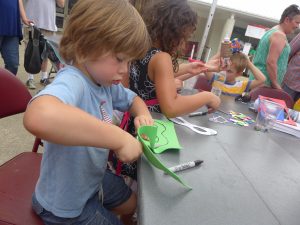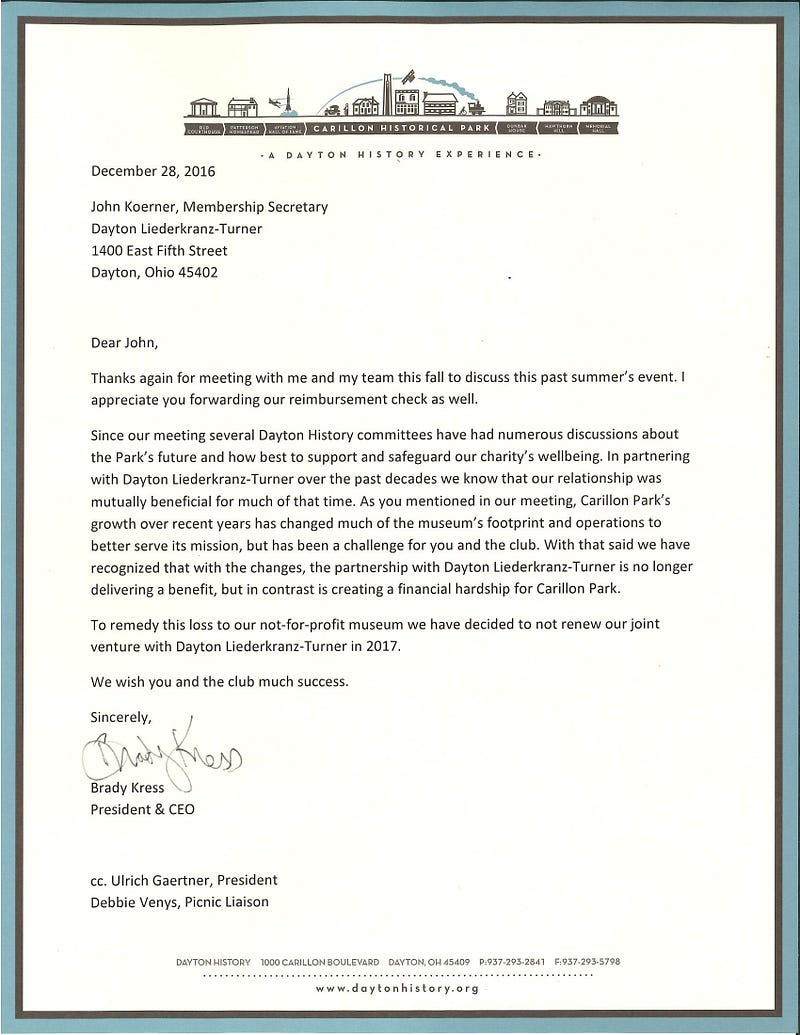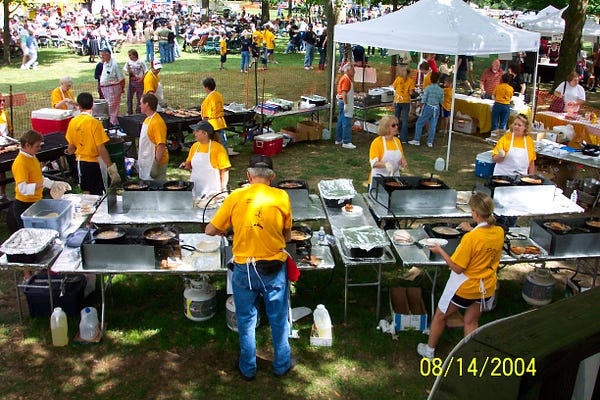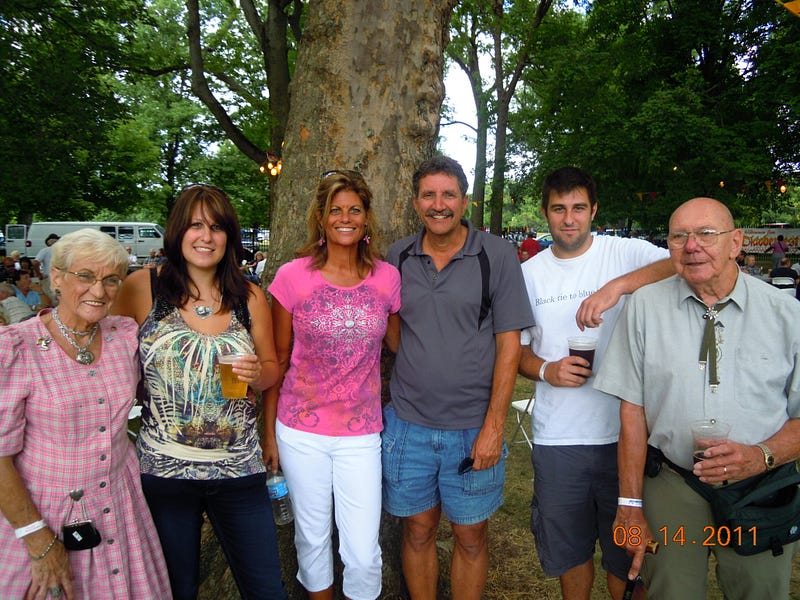 Kristy Reis has lived in Tipp City for most of her life. She grew up being inspired by her mom, Melissa Cairns, for her entrepreneurial spirit and creativity. In 2011, Kristy followed in her mother’s footsteps by opening her own business next to her mom’s shop Cairns Toys. SWEET By Kristy is a boutique bakery, confectionery, and ice cream scoop shop, located in historic downtown Tipp City. The bakery features a variety of handmade ‘tastastic’ and beautiful treats including gourmet cupcakes, cookies, gluten-free brownies, fudge, chocolate dipped sweets and more! Kristy was recently interviewed for our #HomeGrownStories campaign.
Kristy Reis has lived in Tipp City for most of her life. She grew up being inspired by her mom, Melissa Cairns, for her entrepreneurial spirit and creativity. In 2011, Kristy followed in her mother’s footsteps by opening her own business next to her mom’s shop Cairns Toys. SWEET By Kristy is a boutique bakery, confectionery, and ice cream scoop shop, located in historic downtown Tipp City. The bakery features a variety of handmade ‘tastastic’ and beautiful treats including gourmet cupcakes, cookies, gluten-free brownies, fudge, chocolate dipped sweets and more! Kristy was recently interviewed for our #HomeGrownStories campaign.
On moving back to Miami County:
I did not plan on staying in the area. I think almost every kid wants to get out of town when they grow up, you know? I went to college at Miami University, that’s where I met my husband, and after college, we lived in Cincinnati for a while. We eventually made our way back to Tipp once I decided that I was going to start my own business. It just made sense to start next to my mom so we came back.

On starting her business, SWEET by Kristy:
I’ve always seen my mom making things. She ran her business out of our house, so when I grew up I got to help with little tasks where I wouldn’t screw anything up [laughs] to help her. She made stuff to sell all the time. My aunts and uncles would come over in the evening and help her after they got off work. I think her creativity and seeing her make that into a business really inspired me. I always had that in the back of my mind, that I wanted to do something like that someday, but I never really knew how to turn that into an actual business for myself. I didn’t know what to do. When I went to college, I had to decide on something so I ended up being a nursing major – which is totally not creative at all. I worked as a nurse for seven years and became really burnt out. Then it finally came to me and I realized that I could bake and that turned into my business, SWEET by Kristy.
On the community response to SWEET by Kristy:
Everyone feels good and likes to come in and get a treat. It’s fun and celebratory. I feel like I’m on the other end of the spectrum from my previous work as a nurse. Before I met people when they were in a crisis or facing a difficult time in their life and now I meet people when they’re celebrating life. It’s much more positive.

What she loves most about Miami County:
I like that Miami County is small enough that you can get a really good sense of the community and get to know the people around you. It has a nice, small town feel that I really like. I also like getting to know everybody’s different talents and unique businesses. I enjoy connecting with other business owners and entrepreneurial people. You get to know what people are doing and connect with them and you try to support each other. With all of our different businesses, you really don’t need to go outside of the county. You can keep everything as local as possible. It’s fun to support each other within our small community.
Her recommendations of things to do and places to visit in Miami County:
There are so many different creative events in Miami County! We have car shows, the Tipp City Mum Festival, the Troy Strawberry Festival, and Canal Music Fest in Tipp. There’s just so many different things to do (which is really great), I don’t think I can have one favorite. For dining in Miami County, I like Sam and Ethel’s in Tipp for breakfast, Mojos Bar & Grille in Troy for drinks and sandwiches, and Coldwater Cafe in Tipp for dinner. Getting outside, I love Charleston Falls and I really like walking on the bike trail. I really like to play frisbee golf [laughs] along the bike trail here in town.

The best-selling item at SWEET by Kristy:
I started with cupcakes, they are definitely number one! Number two would be our Fud.g.O Chocolates, which are an original item. Fud.g.Os are fudge stuffed Oreos dipped in chocolate.
If Miami County could be represented by a dessert from SWEET by Kristy:
I would say Red Velvet [laughs]. Our Red Velvet Cupcakes are made from scratch the old-fashioned way and frosted with cream cheese icing.
SWEET by Kristy
29 E Main St Tipp City, OH 45371
Facebook: @sweetbykristy
Instagram: @sweetbykristy
Twitter: @sweetbykristy
 This story first appeared on the Miami County Convention and Visitors Bureau website. Follow author, storyteller and interviewer, Courtney Denning, at ThisOhioLife.com.
This story first appeared on the Miami County Convention and Visitors Bureau website. Follow author, storyteller and interviewer, Courtney Denning, at ThisOhioLife.com.

 beautiful flowers, Kettering’s iconic fountains, lots of public art, and it features plenty of green spaces, shade trees and benches for resting your feet. Come enjoy the park while it’s bustling with people and full of even more great artwork.
beautiful flowers, Kettering’s iconic fountains, lots of public art, and it features plenty of green spaces, shade trees and benches for resting your feet. Come enjoy the park while it’s bustling with people and full of even more great artwork. The region is home to some pretty fabulous food trucks. A tasty selection will be at AOTC, so come hungry. Harvest Mobile offers chef-prepared, locally sourced favorites; Sweet P’s Handcrafted Ice Pops will keep you cool in the August heat (we’ve never met a Sweet P’s flavor we didn’t like, by the way); Bella Sorella Pizza is serving up wood-fired deliciousness; and BJ Events has the Greek food we dream about the other 364, non-AOTC days of the year. Seriously, the gyros.
The region is home to some pretty fabulous food trucks. A tasty selection will be at AOTC, so come hungry. Harvest Mobile offers chef-prepared, locally sourced favorites; Sweet P’s Handcrafted Ice Pops will keep you cool in the August heat (we’ve never met a Sweet P’s flavor we didn’t like, by the way); Bella Sorella Pizza is serving up wood-fired deliciousness; and BJ Events has the Greek food we dream about the other 364, non-AOTC days of the year. Seriously, the gyros. 5. Family fun
5. Family fun




 Corie Schweser has made Troy her home for the past thirty years with her husband and sons. For the past three years, she has worked as the business manager of the
Corie Schweser has made Troy her home for the past thirty years with her husband and sons. For the past three years, she has worked as the business manager of the 









































